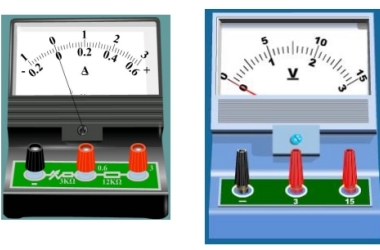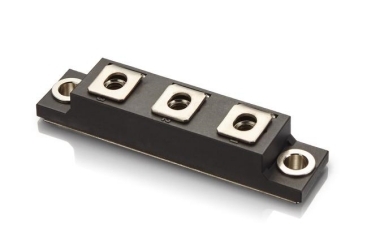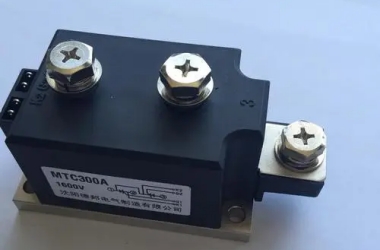THYRISTOR/DIODE MODULES
| Features | Typical Application | Notes |
|
|
|
| Type | IT[AV]/IF[AV] [A] | VDRM/VRRM [V] | IDRM/IRRM [mA] | IGT [mA] | VGT [V] | IH [mA] | dv/dt [V/us] | di/dt [A/us] | ITSM [kA] | Datasheet | Offer |
|---|---|---|---|---|---|---|---|---|---|---|---|
| PDDN-MFx26 | 26 | 600-1800 | 8 | 100 | 2.5 | 150 | 800 | 50 | 0.55 | Request | |
| PDDN-MFx40 | 40 | 600-1800 | 8 | 100 | 2.5 | 150 | 800 | 50 | 1 | Request | |
| PDDN-MFx55 | 55 | 600-1800 | 8 | 100 | 2.5 | 150 | 800 | 50 | 1.25 | Request | |
| PDDN-MFx55H | 55 | 1900-3000 | 10 | 150 | 3 | 150 | 800 | 50 | 1.15 | Request | |
| PDDN-MFx70 | 70 | 600-1800 | 10 | 100 | 2.5 | 150 | 800 | 50 | 1.6 | Request | |
| PDDN-MFx70H | 70 | 1900-3000 | 12 | 150 | 3 | 150 | 800 | 50 | 1.6 | Request | |
| PDDN-MFx90 | 90 | 600-1800 | 10 | 100 | 2.5 | 150 | 800 | 100 | 2 | Request | |
| PDDN-MFx90H | 90 | 1900-3000 | 15 | 150 | 3 | 150 | 800 | 100 | 2 | Request | |
| PDDN-MFx110 | 110 | 600-1800 | 12 | 100 | 2.5 | 150 | 800 | 100 | 2.4 | Request | |
| PDDN-MFx110H | 110 | 1900-3000 | 20 | 150 | 3 | 150 | 800 | 100 | 2.4 | Request | |
| PDDN-MFx135 | 135 | 600-1800 | 10 | 100 | 2.5 | 150 | 800 | 100 | 3.8 | Request | |
| PDDN-MFx135H | 135 | 1900-3000 | 22 | 150 | 3 | 150 | 800 | 100 | 3.8 | Request | |
| PDDN-MFx160 | 160 | 600-1800 | 20 | 150 | 2.5 | 150 | 800 | 100 | 5.4 | Request | |
| PDDN-MFx160H | 160 | 1900-3000 | 25 | 150 | 3 | 150 | 800 | 100 | 5.4 | Request | |
| PDDN-MFx182 | 182 | 600-1800 | 25 | 150 | 2.5 | 150 | 800 | 100 | 5.8 | Request | |
| PDDN-MFx182H | 182 | 1900-3000 | 30 | 150 | 3 | 150 | 800 | 100 | 5.8 | Request | |
| PDDN-MFx200 | 200 | 600-1800 | 30 | 180 | 2.5 | 150 | 800 | 100 | 7.2 | Request | |
| PDDN-MFx200H | 200 | 1900-3000 | 35 | 180 | 3 | 150 | 800 | 100 | 7.2 | Request | |
| PDDN-MFx250 | 250 | 600-1800 | 30 | 180 | 2.5 | 150 | 800 | 100 | 8.5 | Request | |
| PDDN-MFx250H | 250 | 1900-3000 | 40 | 180 | 3 | 150 | 800 | 100 | 8.5 | Request | |
| PDDN-MFx300 | 300 | 600-1800 | 40 | 180 | 2.5 | 150 | 800 | 100 | 9.3 | Request | |
| PDDN-MFx300H | 300 | 1900-3000 | 50 | 180 | 3 | 150 | 800 | 100 | 9.3 | Request | |
| PDDN-MFx350 | 350 | 600-1800 | 40 | 180 | 2.5 | 150 | 800 | 100 | 11 | Request | |
| PDDN-MFx400 | 400 | 600-1800 | 40 | 200 | 3 | 200 | 800 | 100 | 12 | Request | |
| PDDN-MFx500 | 500 | 600-1800 | 50 | 200 | 3 | 200 | 800 | 100 | 16 | Request | |
| PDDN-MFx400W | 400 | 600-1800 | 40 | 200 | 3 | 200 | 800 | 100 | 8.5 | Request | |
| PDDN-MFx500W | 500 | 600-1800 | 40 | 200 | 3 | 200 | 800 | 100 | 11 | Request | |
| PDDN-MFx600W | 600 | 600-1800 | 40 | 200 | 3 | 200 | 800 | 100 | 13 | Request | |
| PDDN-MFx800W | 800 | 600-1800 | 40 | 200 | 3 | 200 | 800 | 100 | 16 | Request | |
| PDDN-MFx800 | 800 | 600-1800 | 40 | 200 | 3 | 200 | 800 | 100 | 16 | Request | |
| PDDN-MFx1000W | 1000 | 600-1800 | 50 | 200 | 3 | 200 | 800 | 100 | 20 | Request | |
| PDDN-MFx1000 | 1000 | 600-1800 | 60 | 200 | 3 | 200 | 800 | 100 | 20 | Request | |
| PDDN-MFx1200 | 1200 | 600-1800 | 70 | 200 | 3 | 200 | 800 | 100 | 24 | Request |
| Remark: | 1.MFx shows any type of MFC/MFA/MFK/MFX |
Overview of Thyristor/Diode Modules
Thyristor/diode module is an integrated power electronic device used to control and regulate AC or DC power sources. These modules are composed of thyristors or diodes, which have the characteristics of small size, high reliability, and convenient use, and are widely used in various power systems and electronic devices. The thyristor module controls high current and voltage through small current or voltage, and has advantages such as high voltage resistance, large current, and low conduction voltage. It is suitable for applications such as contactless switching, controllable rectification, inverter, dimming, voltage regulation, and speed regulation. Diode modules are mainly used for basic circuit functions such as rectification, voltage regulation, and switching, suitable for simpler circuit control and low voltage or low current application scenarios.
Characteristics of Thyristor/Diode Modules:
1. High efficiency: The thyristor/diode module adopts advanced power electronics technology and materials, which have high energy conversion efficiency and controllability, and can significantly reduce energy loss and waste.
2. High reliability: The components of the thyristor/diode module have undergone strict screening and testing, adopting a high integration and modular design, which improves the stability and reliability of the circuit and reduces the possibility of faults and maintenance.
3. Easy to use: The thyristor/diode module has standardized interfaces and specifications, making it easy to integrate with various circuits and systems. When in use, simple connections and configurations are required, reducing the difficulty and technical threshold of use.
4. Flexible configuration: The thyristor/diode module can be flexibly configured and combined according to different application requirements, achieving various power control and regulation functions, and meeting the needs of different fields and scenarios.
5. Environmental Protection and Energy Conservation: As an efficient and energy-saving electronic device, thyristor/diode modules can reduce energy waste and emissions of pollutants, which is in line with the current trend of green environmental protection and helps promote sustainable energy development.
Application of Thyristor/Diode Modules
1. Rectifier circuit: Utilizing the unidirectional conductivity of diodes to convert alternating current into direct current. This is the most common application scenario for diode modules.

( used for voltmeters and ammeters)
2. Inverter circuit: Using power electronic devices such as thyristors or IGBTs to convert direct current into alternating current, commonly used for speed regulation and frequency control of AC motors.

(Diode modules)
3. Switching power supply: Utilizing the high voltage resistance and high current characteristics of thyristor or diode modules, the power supply can be controlled on/off to achieve efficient power conversion.
4. Contactless switch: The thyristor module can be used as a contactless switch, with the advantages of fast on/off and low loss.

(Thyristor modules)
5. Motor control: By using thyristor or diode modules, the motor can be controlled for speed regulation, starting, and braking, improving its operational efficiency and reliability.
6. Power supply protection: The diode module can be used for power supply protection, such as overcurrent protection and overvoltage protection, to ensure the safety of power equipment and circuits.

Company Profile
PDDN Photoelectron Technology Co., Ltd. (sales@pddn.com) is a high-tech enterprise focusing on the manufacturing, R&D, and sales of power semiconductor devices. Since its establishment, the company has been committed to providing high-quality, high-performance semiconductor products to customers worldwide to meet the needs of the evolving power electronics industry.
It accepts payment via Credit Card, T/T, West Union, and Paypal. PDDN will ship the goods to clients overseas through FedEx and DHL, by sea, or by air. Please inquire if you want a high-quality Thyristor/Diode Modules; we will help.
Payment Methods of Thyristor/Diode Modules
L/C, T/T, Western Union, Paypal, Credit Card etc.
Shipment of Thyristor/Diode Modules
By sea, by air, by express, as customers request.
Storage Conditions for the Thyristor/Diode Modules
1. Temperature: Thyristor/diode modules should be stored in a dry, ventilated, and temperature appropriate environment to avoid supercooling or overheating. It is generally recommended to store them at temperatures between -40 ℃ and+125 ℃.
2. Humidity: Thyristor/diode modules should be stored in an environment with a relative humidity of no more than 60% to avoid moisture and prevent performance degradation or short circuits caused by moisture absorption.
3. Lighting: The thyristor/diode module should be stored in a dark environment, avoiding direct sunlight or prolonged exposure to strong light to avoid affecting its performance.
4. Anti static: Thyristor/diode modules should avoid contact with static sensitive devices to prevent static electricity from affecting them.
5. Packaging: The thyristor/diode module should be stored in a moisture-proof, dust-proof, and shockproof packaging box to avoid mechanical damage or vibration.
6. Storage time: The storage time of thyristor/diode modules should not be too long, generally not exceeding 6 months. Long term storage may cause performance degradation or aging issues.
7. Regular inspection: Regularly inspect the packaging and appearance of the thyristor/diode module to ensure there is no damage or abnormal situation.
FAQ
Q1
What is the main difference between thyristor and diode modules?
Re:The main difference between thyristor and diode modules lies in their control characteristics, working principles, and application areas. Thyristors are semi controlled devices that can control their conduction by controlling the gate voltage. They are mainly used for high-power control and switching circuits. The diode module, on the other hand, is integrated and packaged with diodes, mainly used for basic circuit functions such as rectification, voltage regulation, and switching.
Q2
What is the application and development trend of thyristor/diode modules in the field of new energy?
Re:Used to convert the direct current generated by solar panels into alternating current for use in households or the power grid. Used to control the start, stop, and energy conversion of wind turbines. The thyristor/diode module plays an important role in the rectifier switch circuit of the inverter and the inverter of the wind power system. With the development of new energy, energy storage systems have become increasingly important. Thyristor/diode modules have a wide range of applications in charging and discharging control of energy storage systems. With the expansion of the electric vehicle market, the demand for charging facilities is constantly increasing. The thyristor/diode module plays a crucial role in the power module, charging control, and energy recovery system of charging facilities.
Q3
What are the applications and challenges of thyristor/diode modules in electric vehicles and charging facilities?
Re:The energy consumption of electric vehicles directly affects their range, so efficient power modules are needed to reduce energy consumption. The working environment of electric vehicles is relatively harsh, requiring high reliability and stability of thyristor/diode modules. With the continuous development of charging technology, higher charging power is required to achieve fast charging, which puts higher requirements on the voltage resistance and current carrying capacity of thyristor/diode modules.
Q4
How to solve the problem of performance degradation of thyristor/diode modules in harsh environments such as high temperature and humidity?
Re:Choose materials and packaging methods that are resistant to high temperature and humidity to improve the reliability and stability of the device. Strengthen heat dissipation design to reduce the operating temperature of the module, thereby improving its performance and lifespan. Adopt appropriate protective circuits and measures to prevent abnormal situations such as overvoltage and overcurrent from causing damage to the module.
Q5
What are the packaging technologies for thyristor/diode modules?
Re:The packaging technology of thyristor/diode modules mainly includes direct insertion packaging and surface mount packaging. Direct insertion packaging is suitable for high-power and high-voltage modules, while surface mount packaging is suitable for small-sized and highly integrated modules. In addition, there are some special packaging forms, such as power modules, hybrid modules, etc., suitable for specific application scenarios. Choosing the appropriate packaging method needs to be determined based on specific application requirements.
Opening Time
- Sunday – Friday: 09:00am – 10:30pm
- Saturday: 10:00am – 02:00pm
Contact Info.
- Email: sales@pddn.com
- Mobile: +86 18837951818
Contact Address
- Tongrun photoelectron, 3rd Floor, Nanshan Science Park, Nanshan District, Shenzhen, Guangdong, China
